Through the desert on a bike
The North and West to Walfish Bay
Namibia, a dream for many. For a long time, I had also wanted to travel through this desert country by bike. I knew little about the place except that it used to be German South West Africa with good beer as an inheritance and that the Skeleton Coast ran along the coast. As always, I was open for surprises and the surprise was very positive.
What a welcome: I crossed the border from Botswana to Namibia at Mohembo, which was the western most corner of the Caprivi Strip, and stood in a national park. I was allowed to enter but not to continue. Once again, I heard the tale of lions which I still hadn’t seen.
A nice man gave me a lift in his pickup truck and I learnt a few things about Namibia. For example, the Etosha Pan was one of the largest national parks but not for me because cycling wasn’t allowed and that Afrikaans was spoken in Namibia.
From Divundu I was allowed to continue by bike. It was already late, and I went to the clinic and asked whether I could camp there. As always, it wasn’t a problem. Nurse Josephine allowed me to camp directly in front of her house under a roof.
There were two reasons why I liked to camp at clinics: the nurses were always very nice and they really knew the country and its problems. They always had to deal with the consequences.
One of the main problems was HIV which was aggravated by alcohol abuse. Iin addition, this part of Namibia didn’t have clean drinking water. The tap water comes directly from the Okavango River.
The HIV problem became clearer next evening at the school.
The first part along the border with Angola wasn’t very exciting because it followed the Okavango River. But after the dry spell in the other countries, it was nice to see so much greenery and water.
The rain which constantly caught up with me was less nice.
Fish was sold by the roadside.
Everywhere it was being air dried.
Here in the north, there were a lot of opportunities to camp legally. For example, in Outapi, a community initiative had set up for camping spots around the largest baobab tree, the Ombalantu Baobab.

The inside of the tree is hollow and, in the past, had been used for different purposes, including prison, hideout for refugees, and church.
On the western side of the country the Kunene River marks the border. On the way to the Ruancana Falls it suddenly became mountainous which shouldn’t have been a surprise because a waterfall needs a drop.
And water which unfortunately wasn’t there. But it rained.
Below the falls, at the hippo pools, there was water but no hippos.
Nevertheless, it was very beautiful
And the crocodiles weren’t there either although I had been warned against them.
I continued south to Opuwo, the town of the Himbas.
The hippo pool campground was owned by this proud tribe. Since I left Burkina Faso, I hadn’t seen any Africans in their traditional outfits.
It was very special and I was fascinated how they kept their identify with dignity and pride. The hair is drenched in cow blood which might have a strong smell.
I had asked whether I was allowed to photograph them and gave them something for it.
I spent New Year’s in peace and quiet in the pretty rest camp of Aameny/Oreness in the middle of town.
I just sat there and reflected on the year that had passed.
I watched the weaver bird as it built its nest.
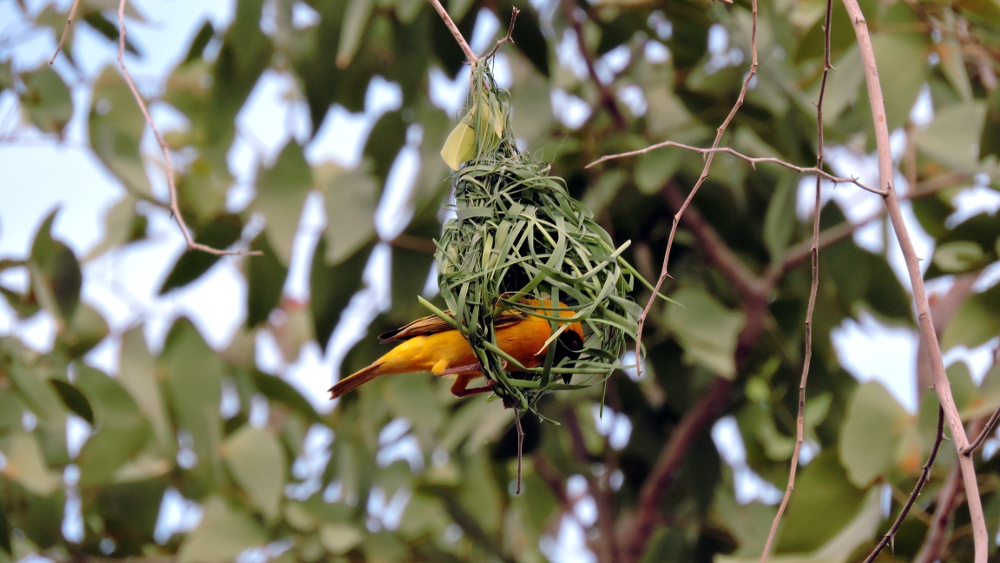
The yellow bird flew past me many times, picked up long grass blades and weaved them skillfully into a ball. Fantastic.
There were many long thorns and I therefore had the pleasure to show the kids from the camp how to fix a flat tire.
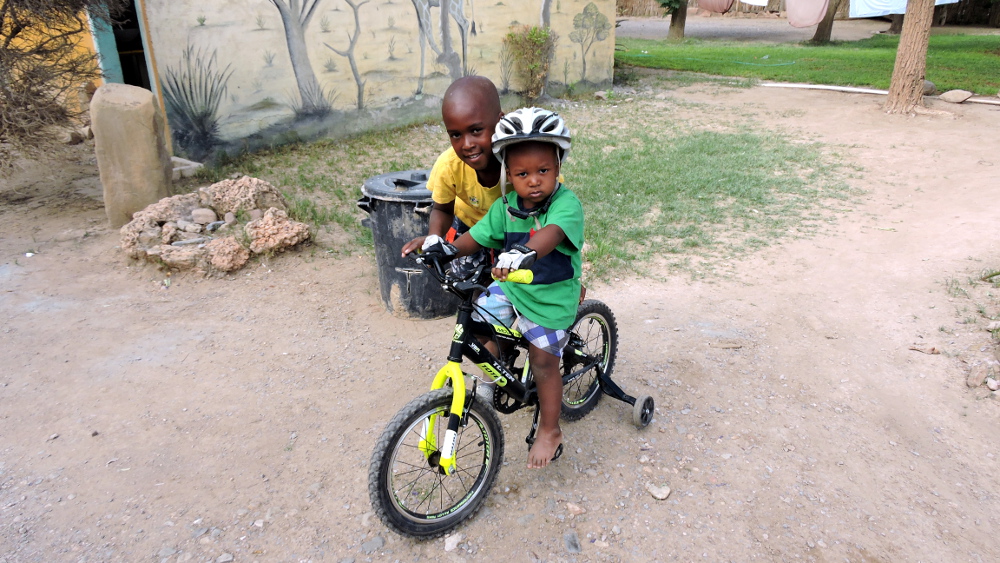 To celebrate the end of the year, I made a small fire which unfortunately ended early because of the rain.
To celebrate the end of the year, I made a small fire which unfortunately ended early because of the rain.
And this is how the new year started
Gravel road to the horizon. Fortunately, I didn’t know how long it’d be in total.
I should have realized that in such a remote area there wouldn’t be many opportunities for shopping even so villages were marked on the map.
I was always grateful to drivers who stopped and offered me water or fruit.
Here was a Polish family which also gave water to two local boys.
Not only was it the beginning of the gravel road but also of the mountains.
Nevertheless, I treated myself to a short detour to Sesfontain where an old German fort was supposed to be located.
The fort had been rebuild including a fancy lodge. The place itself didn’t interest me very much. But the way and especially my spot for wild camping were fantastic.
In the morning, springbok appeared while I had breakfast.
Leaving the valley
I saw more springbok
I hardly managed to cycle until I decided that I had taken enough photos of them.
And then I met my first cyclists since I had said good-bye to Marcelo:
Lars de Witt. He lost a leg in a bike accident but he continues to cycle. Unbelievable! From now on, I decided not to complain.
Unfortunately, he went in the opposite direction.
It got more and more like desert and there wasn’t much water.
In the evening I was allowed to pitch my tent with the Damara people, another Namibian tribe.
They could help out with some water but because of the drought they didn’t have much themselves. They dug in the river bed until they found water which allowed them and their goats to survive.
The Himba lived close by.
They usually kept cows which needed more water and slowly all perished.
Next day there were zebras next to the road.
In Botswana I had kept a lookout for them and here they ran right across the road in front of me.
One hundred kilometers later I came to the town of Palmwag.
The shop was once again a sad affair but at least I could buy spaghetti and cookies.
In addition to the bottle shop there was a lodge and a small camp ground.
The camp ground, where I was the only guest, was near a watering hole. The owner, John, told me where was the best place to camp because there was a chance that an elephant might visit in the evening.
It didn’t take long before the first elephant appeared.
Finally, I also saw giraffes,
Very elegant animals,
I watched the games of the females for a while but then started dinner and ate. I had just finished when the first elephants came up from the water hole.
The leaves from these trees appeared to be the tastiest.
For now, they were on the other side of the camp ground, away from my tent.
Then they started eating from the tree under which I had pitched my tent.
I had been told that elephants and lions didn’t destroy tents but there were so many of them that I wasn’t sure.
John got more and more nervous because he hadn’t expected so many elephants. He became desperate and tried calling people. “Only one needs to come with a car and the elephants disappear”. Neither one of us had a car. The local police which had already started to drink beer at lunch time had no interest to help.
Finally, he called the lodge. The tour guide was also the local ranger. Not only he but also the owners Susanne and Hans came with two pick-ups.
My pitched tent, which surprisingly wasn’t damaged, was put on one truck, my bike and other stuff was put on the second one.
They took me to the more secure Palmwag Lodge. Here I wasn’t alone. It was more luxurious but not as relaxed as one the little camp ground.
By now it was 21:00 and the show with the elephants had lasted three hours.
When I cycled passed the camp ground next day, John told me that after I had left, eight lions came and killed a horse. Maybe it was a good thing that I had stayed at the lodge.
It was like cycling through an alley of giraffes
Everywhere they stood next to the road and looked at me even so there were lots of tourists in their rental cars. Only a car with three Swedes stopped.
They went through their entire car and gave me water, dried fruit, bread, and other treasures which they could spare. Thank you because once again there wasn’t a store in sight!
Things got really amazing when I went over a small pass and down the other side.
Why hadn’t anyone told me how absolutely amazing Namibia was?
Sadly, there were already too many tourists who sped through the area in their rental cars.
The “road” was in a terrible condition.
When I turned onto a smaller one, it got almost worst. I should have realized because the road went to the tourist attraction of Twyfelfontain where there were rock paintings.
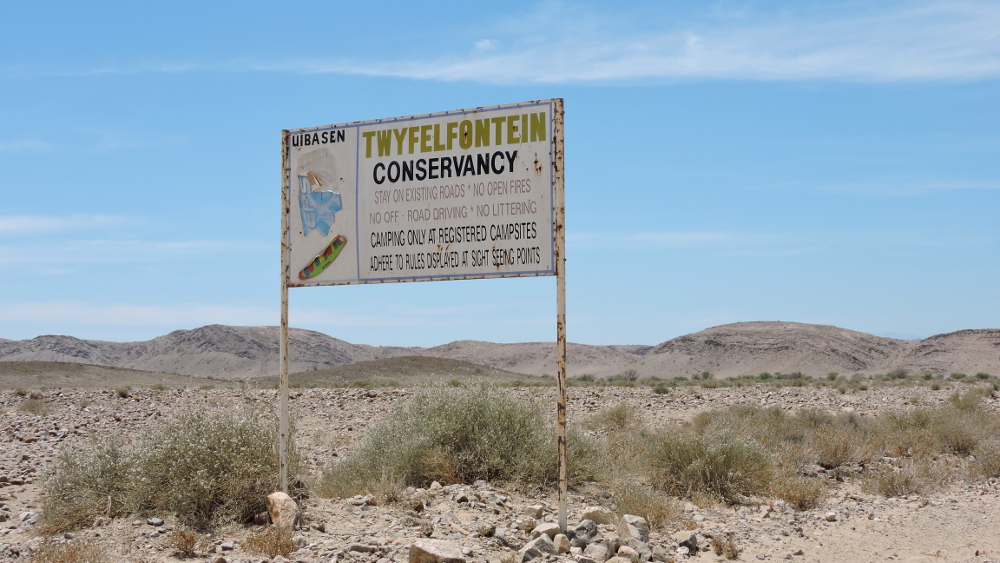
And my conservation park
I didn’t realize that I was a chicken which needed protection (of course not true).
It was a beautiful ride through a red mountainous landscape.
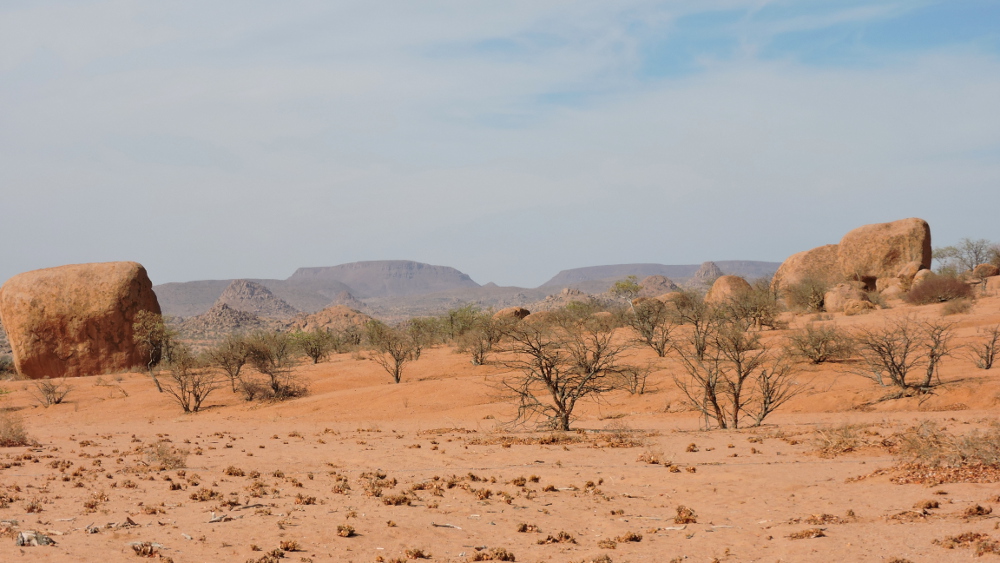
I didn’t have much water left. Locals had told me where to find water but there wasn’t any or I didn’t find it. It was incredibly hot. The cars which passed me, did so at high speed.
Finally, a vehicle stopped and it was bull’s eye! It was a companion car for a water truck from “NamWater”. There was such a shortage that trucks had to distribute water in the region. There was a large canister in the car, I filled all my bottles, and got an extra one.
I could give away water to children who begged for it by the roadside.
And that way, I made it to the top of the mountain towards Uis.
It was Sunday and I knew that there was a shop. Usually shops were open on Sundays but I arrived too late. How annoying!
Opposite was the Brandberg rest camp. What a contrast to the surrounding area: the pool was filled with water (which tasted horrible), there was a large choice at the restaurant, and I got a beer.
Bevor I continued next day, downhill and finally in the direction of the ocean, I did some serious shopping in the “supermarket” in Uis, the first one in more than a week since Opuwo.
The desert was now very sandy and I saw my first ostriches
And a man who walked. I hardly believed my eyes. I had found it difficult to manage food and water over the long distances. It takes much longer on foot and one needs more supplies.
Dave van Graan therefore had a cart which he pulled.
He crossed the whole of Namibia, from the Oranje River (border with South Africa) to the Kanene River (border with Angola). This was one of the few entertaining encounters in the desert. We were battered by a cold wind which didn’t prevent us from exchanging experiences.
Dave’s hike was a protest action to save the last rhinos from poaching which remained a big problem in southern Africa.
He had to climb the mountain, with tailwinds, I descended the mountain with headwinds until I finally reached the ocean. After 650 kilometers I cycled on a surface that resembled tar. Along the coast the road is made of salt.
When I reached Henties Bay, I first raided the supermarket and then looked for the camp ground. I had never seen the like. Each spot had its own toilet, shower, and kitchen nook. The obligatory braai, the South African word for BBQ, and electric outlets were everywhere.
Franzi of Buck’s Camping Lodge had a soft spot for me and gave me such a good discount that I could stay for two nights. Just to relax, eat, drink, write, and sleep. A respite from the gravel road. The first ten days of this year had been enough!
Now I wanted to enjoy the ocean and then slowly proceed to the south.
I had a look at all the sights on this road, including this ship wreck
I took long breaks and looked early on for a place to camp.
One of the main German enclaves in Namibia is without a doubt Swakopmund.
Just looking at the bike lane, I realized that here I was in a different Africa.
And everything was nice and tidy.
In the beginning, I thought it was entertaining to read German such as “Old Chancellery”, “Old Bridge”, and “Brewery”.
Then it got to be over the top because it was all just window dressing, “Fake Germany”. I never understood why Germans who emigrated from Germany, wanted to recreate Germany in Africa.
I didn’t cycle for 22,000 kilometers to see Germans and quickly left.
Further south was the port town of Walfish Bay. My bike and I could take a good rest at Bryan’s.
The view of the lagoon was amazing.
During the day there were lots of flamingoes and in the evening the pelicans arrived.
And what came next will follow soon. Here is a preview: Bryan convinced me that paved roads were boring. Back to gravel roads?
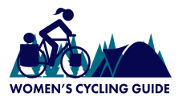

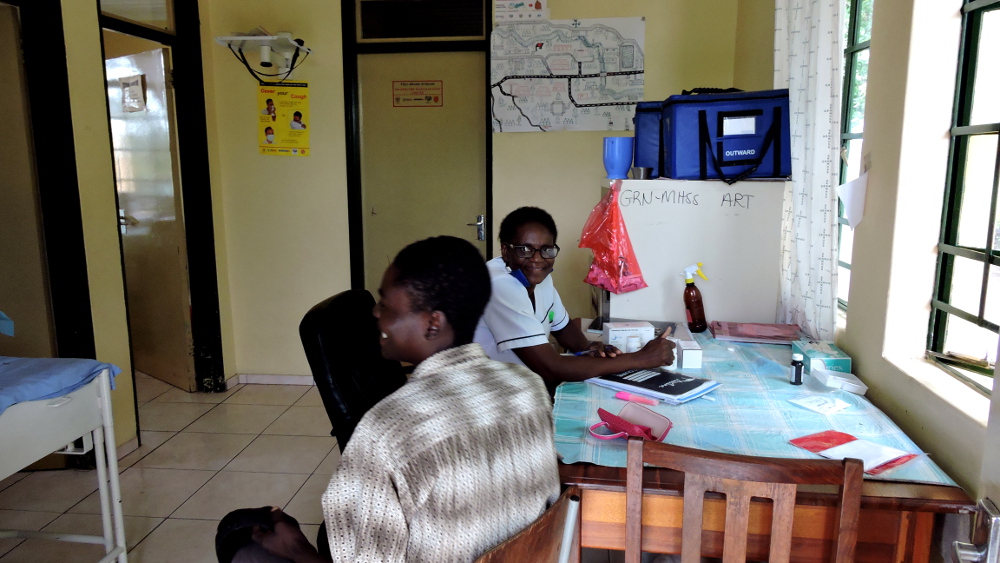

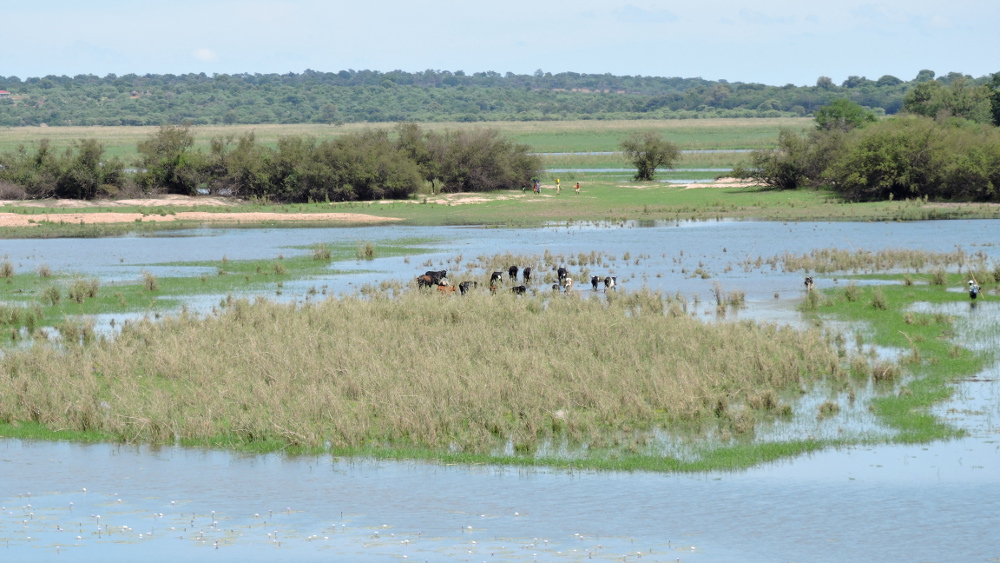
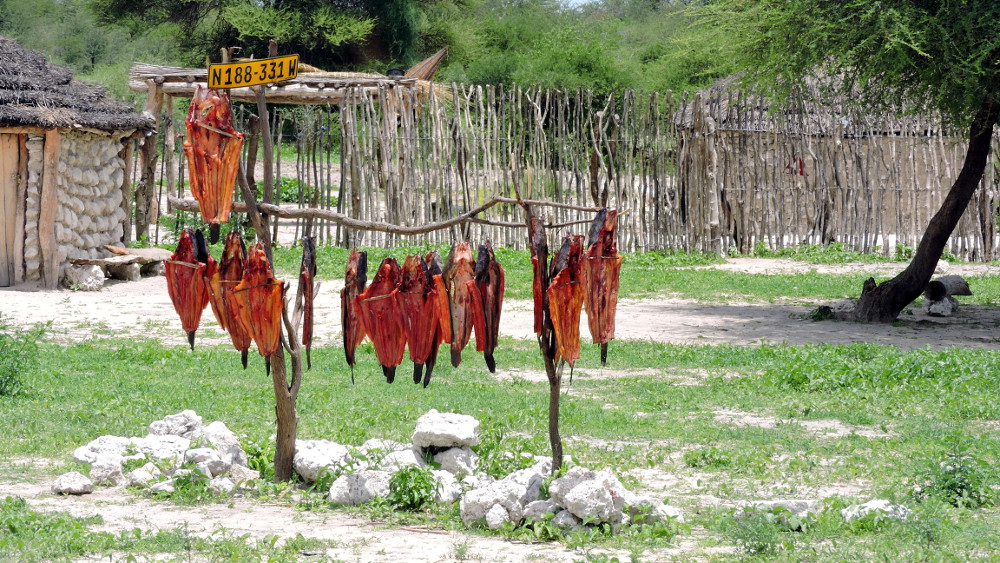
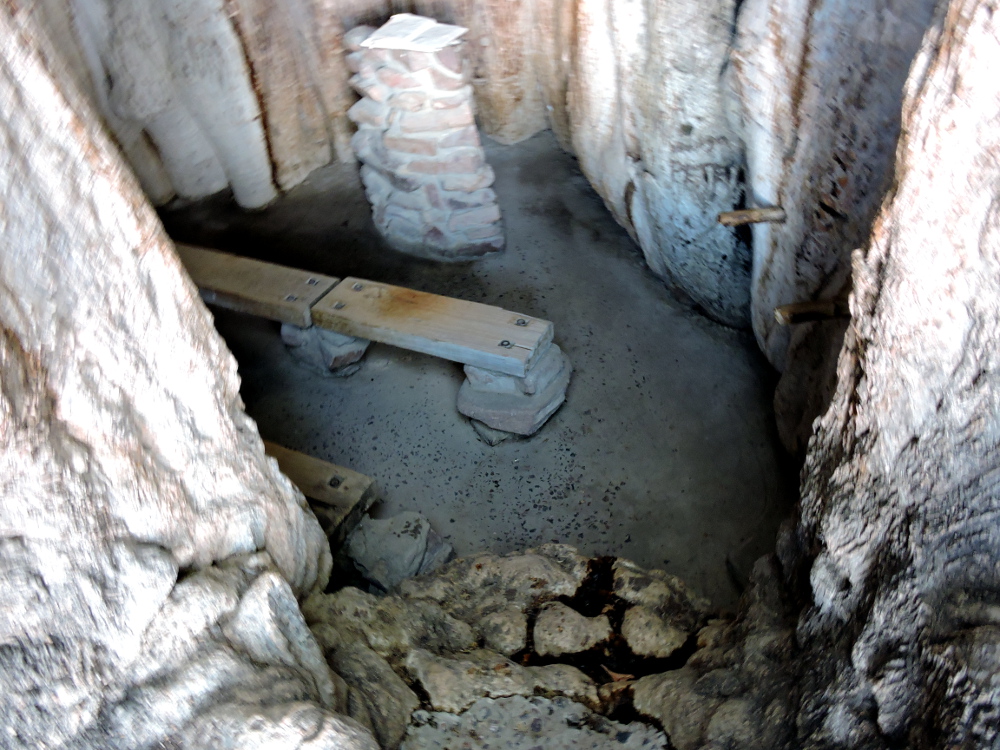
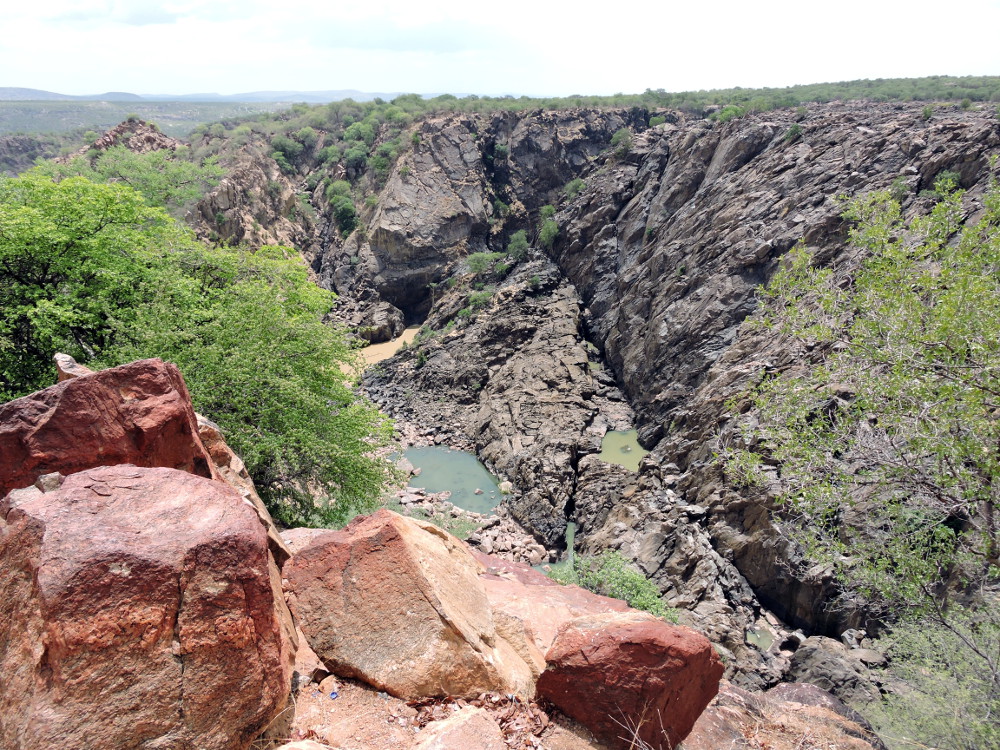
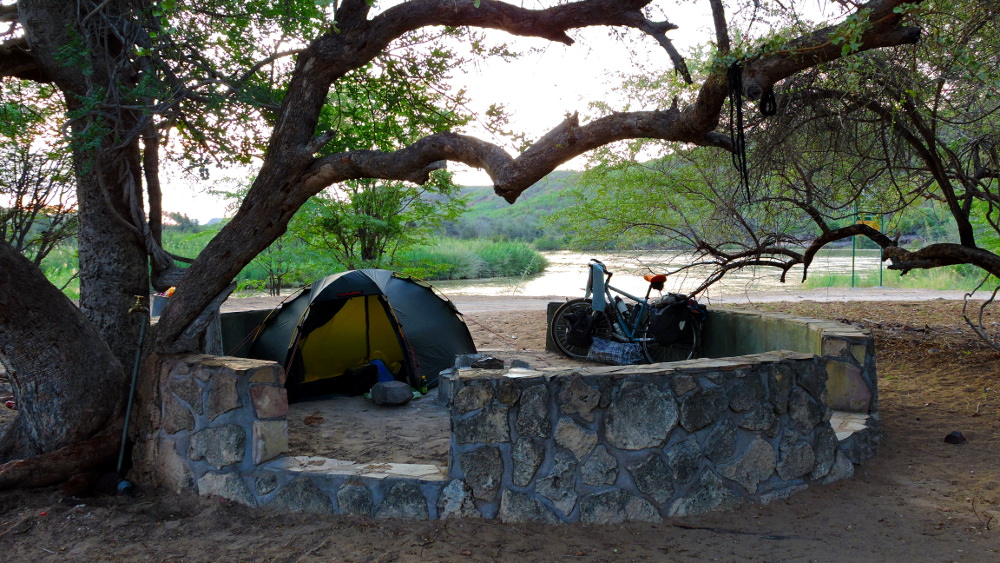
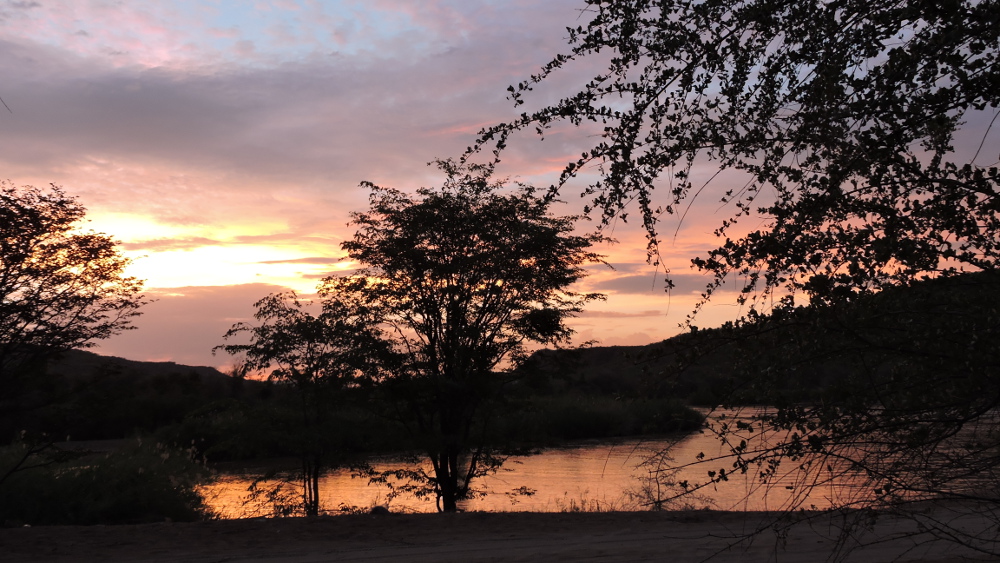
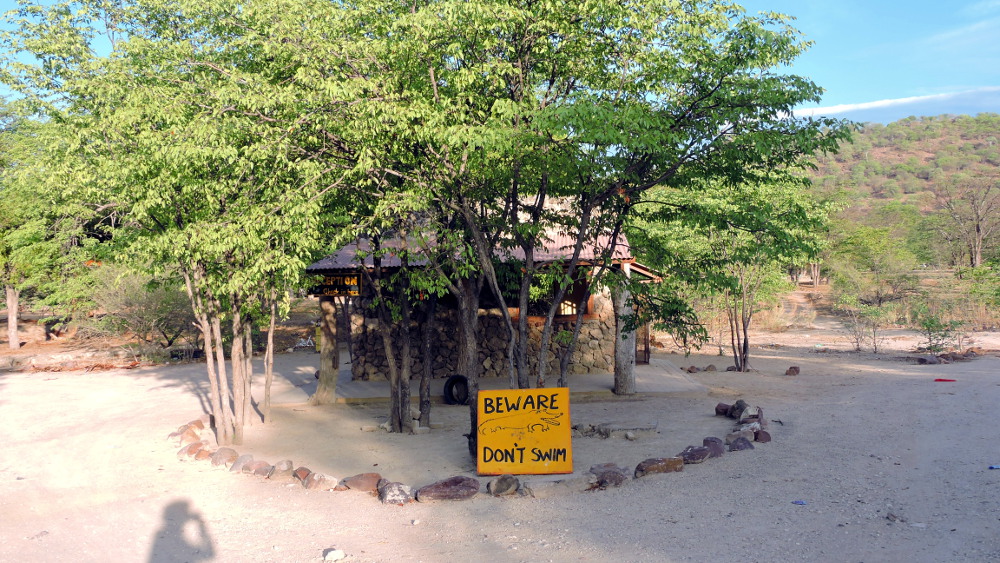
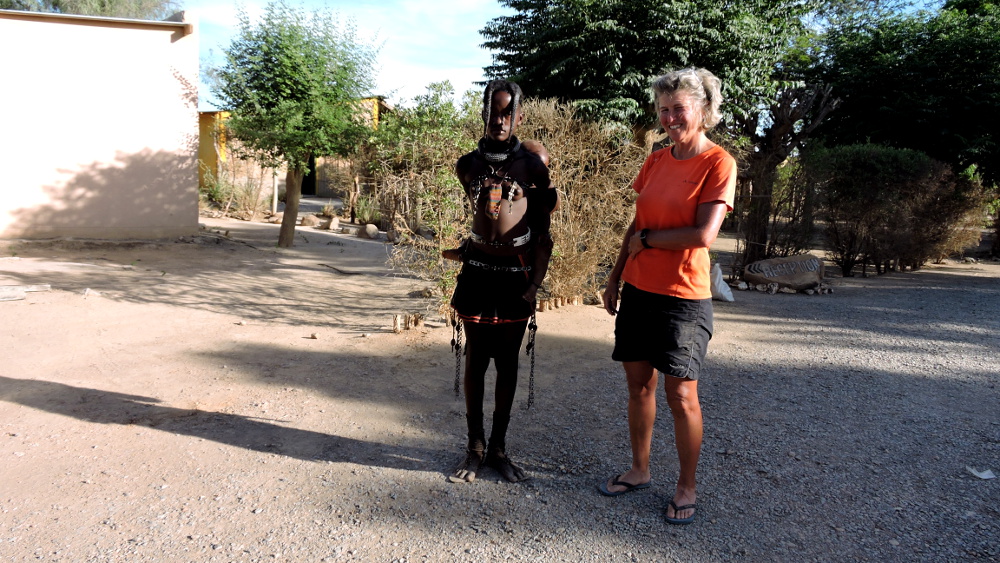
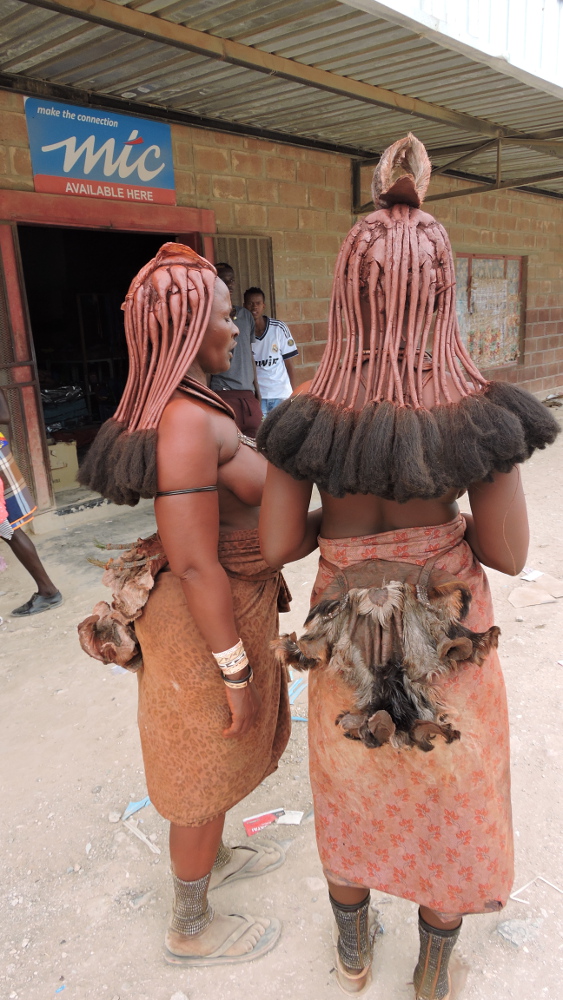

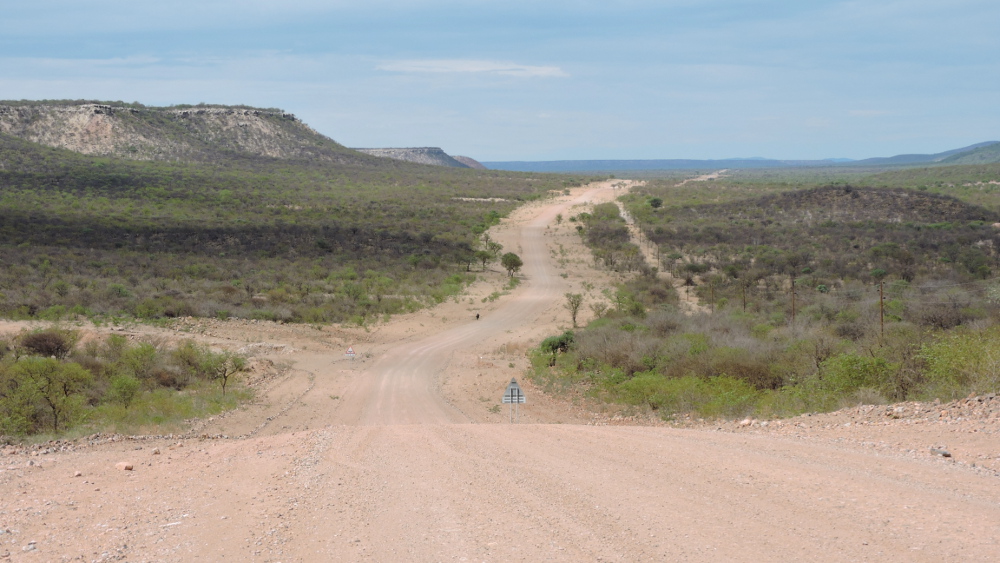
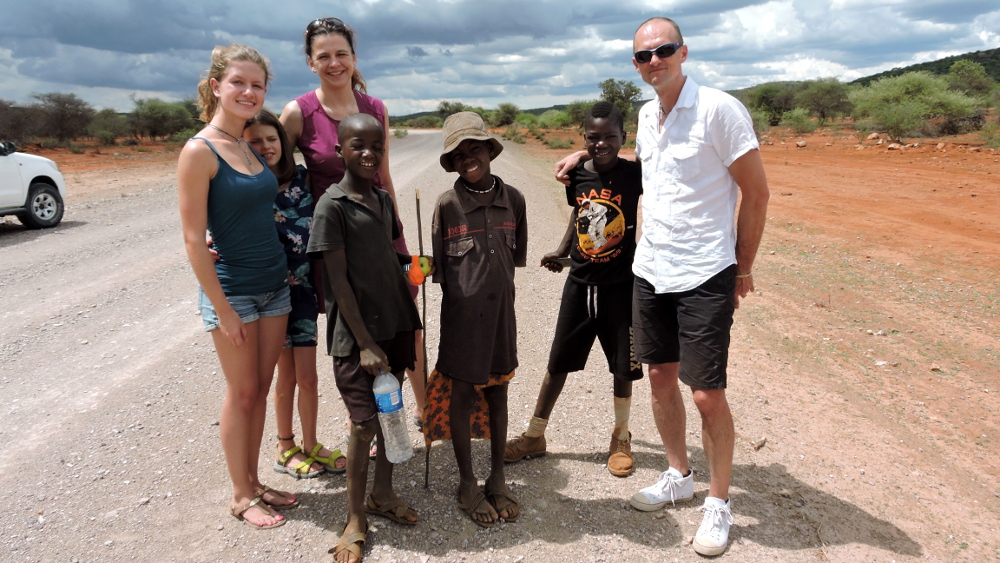
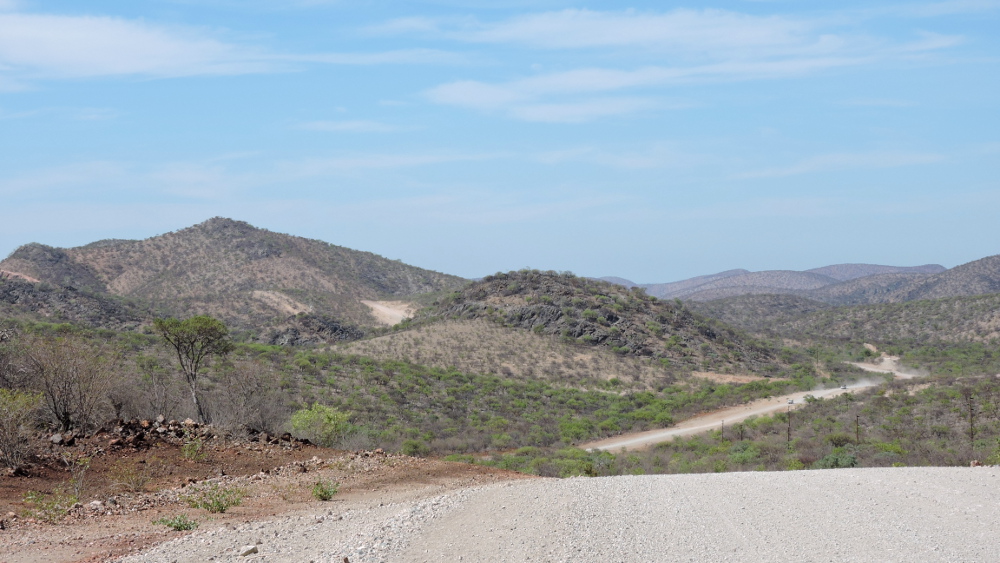
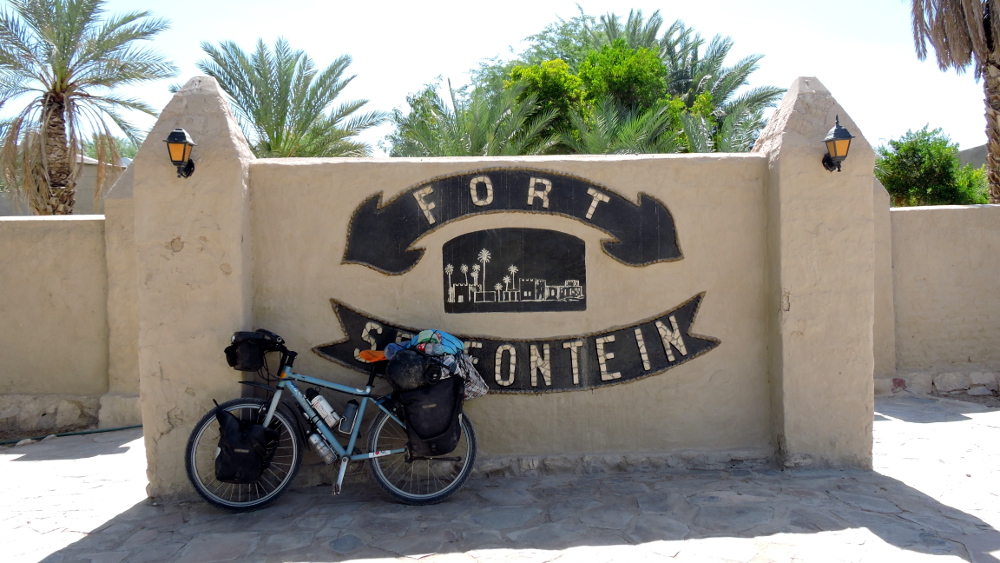
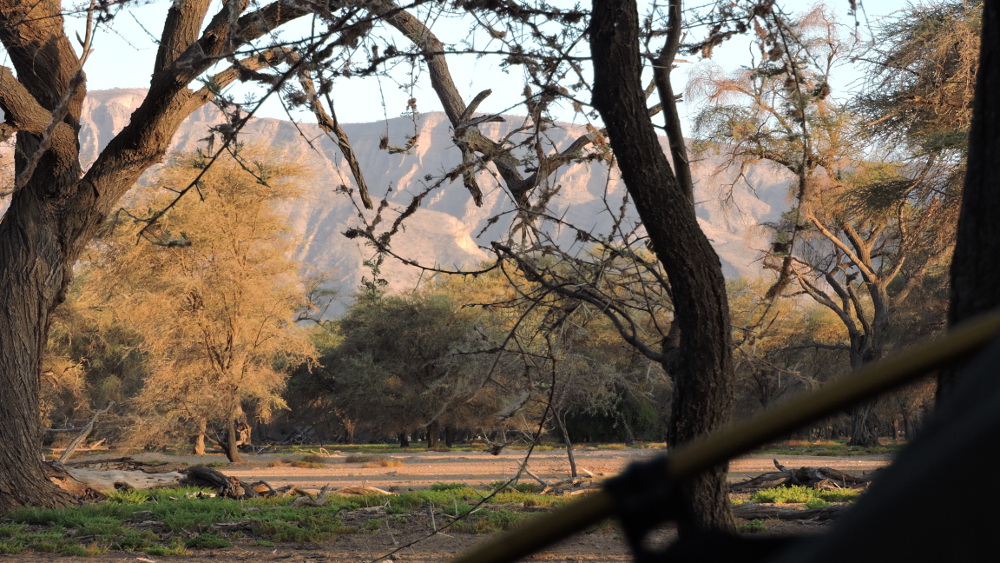
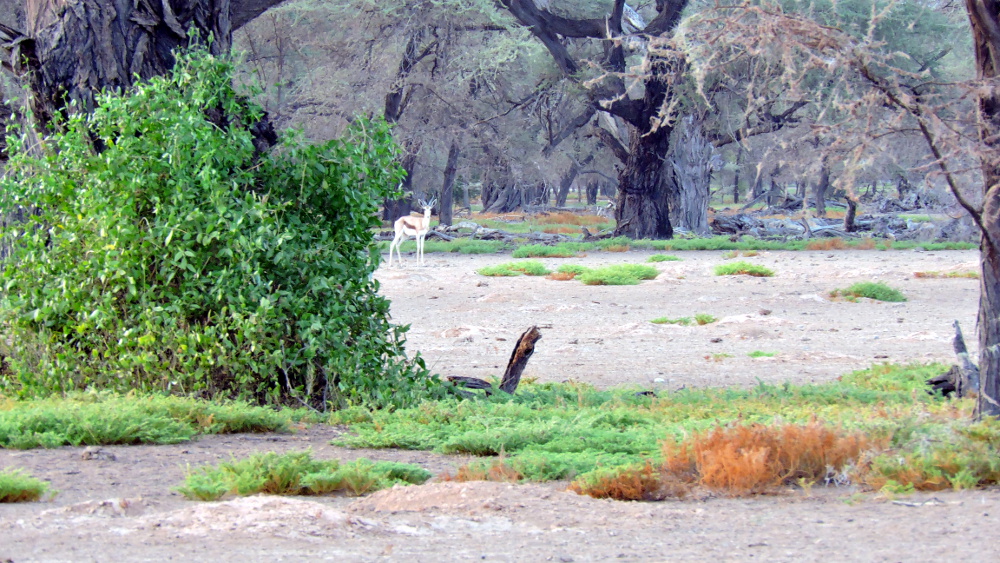
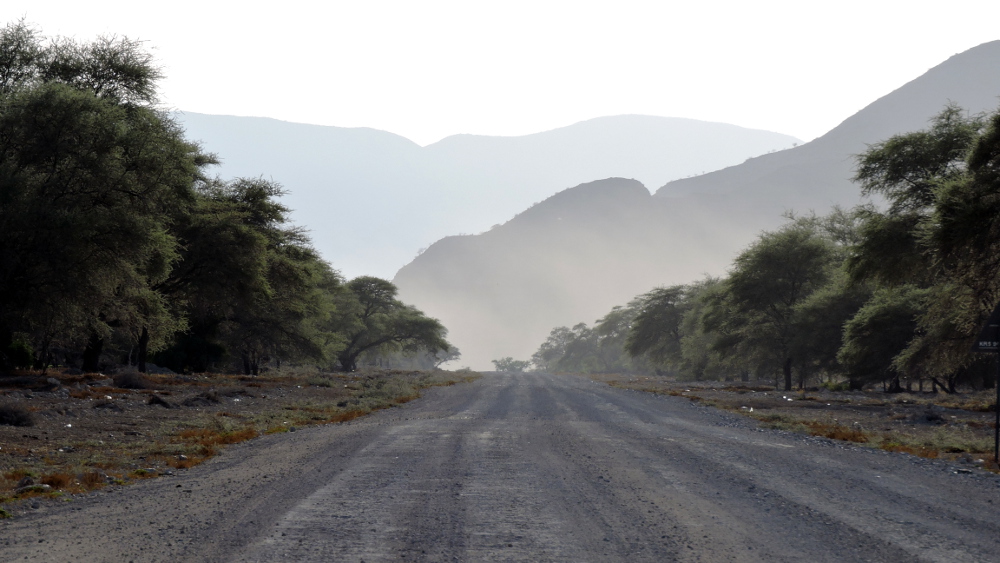
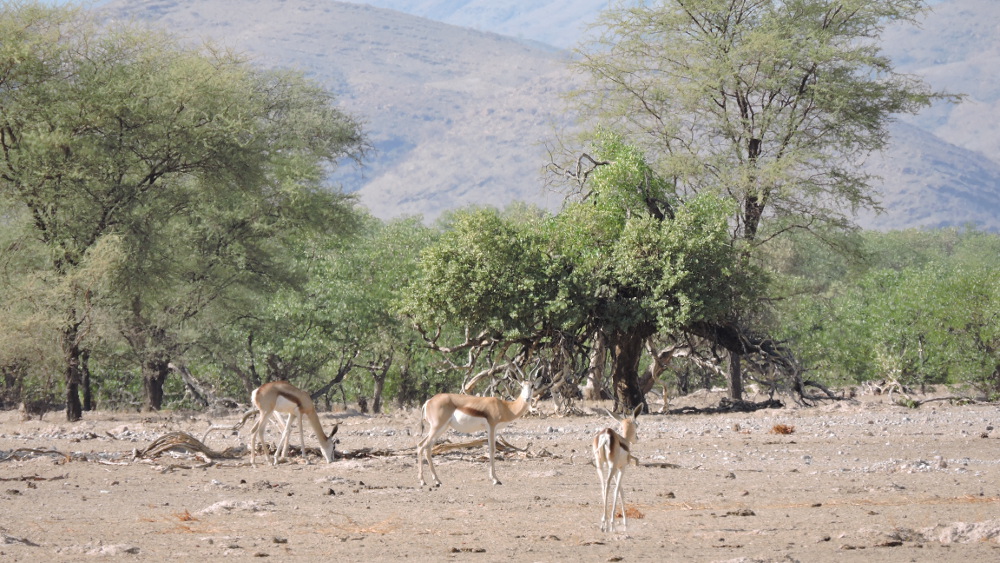

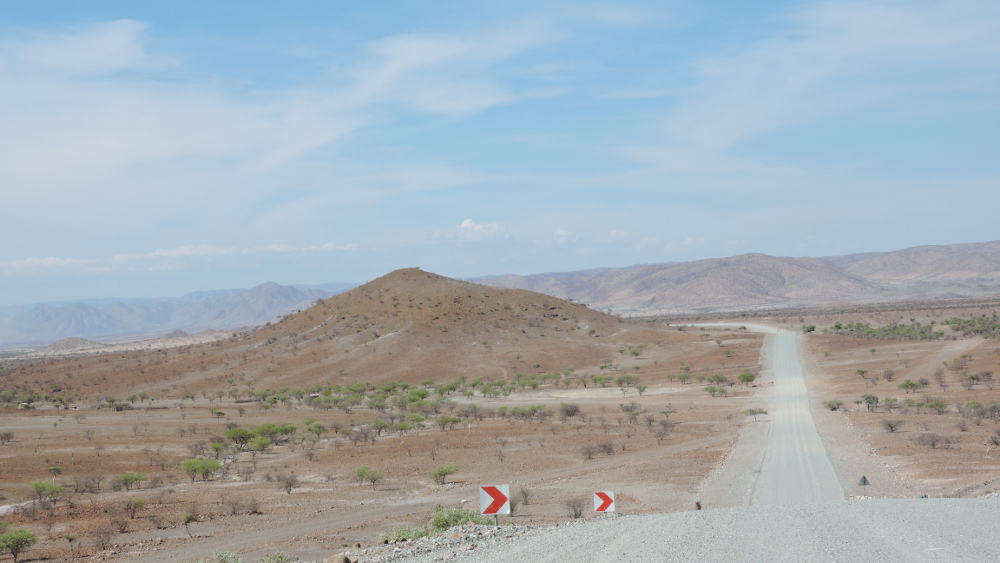
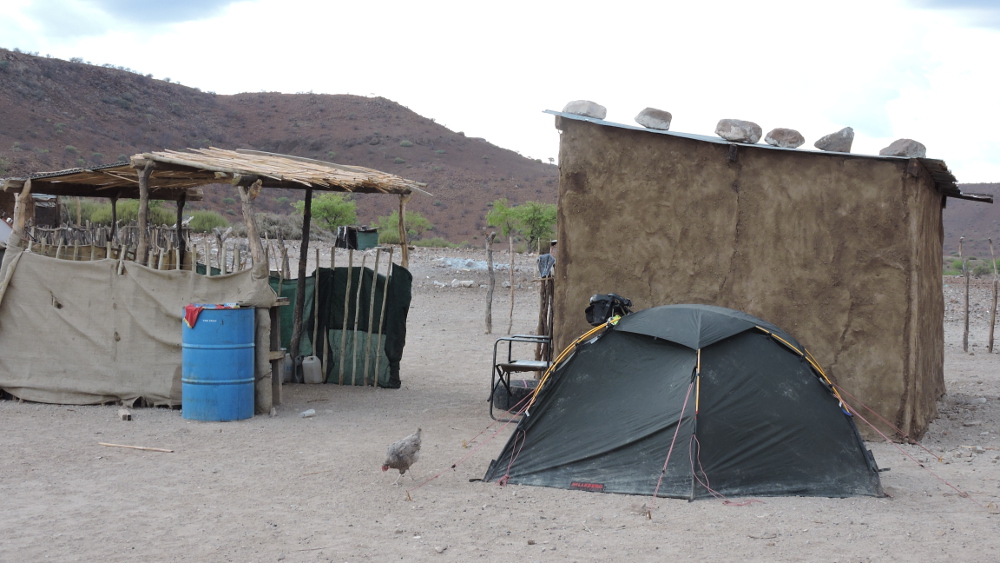

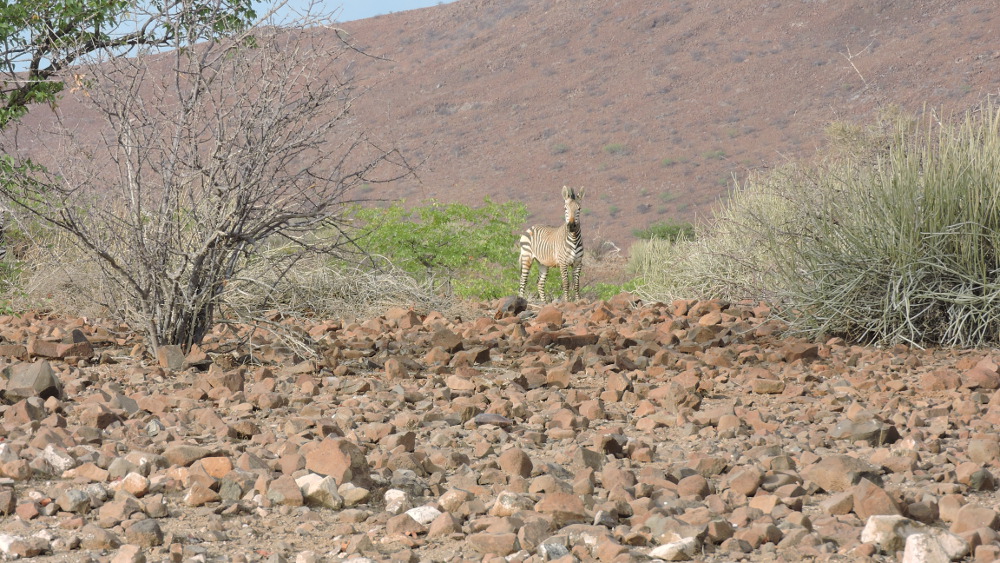
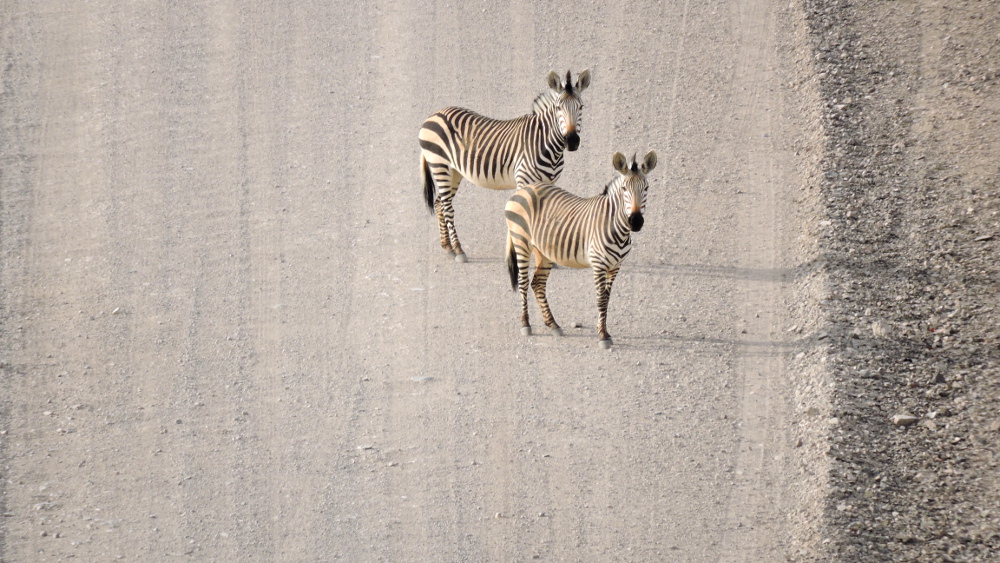


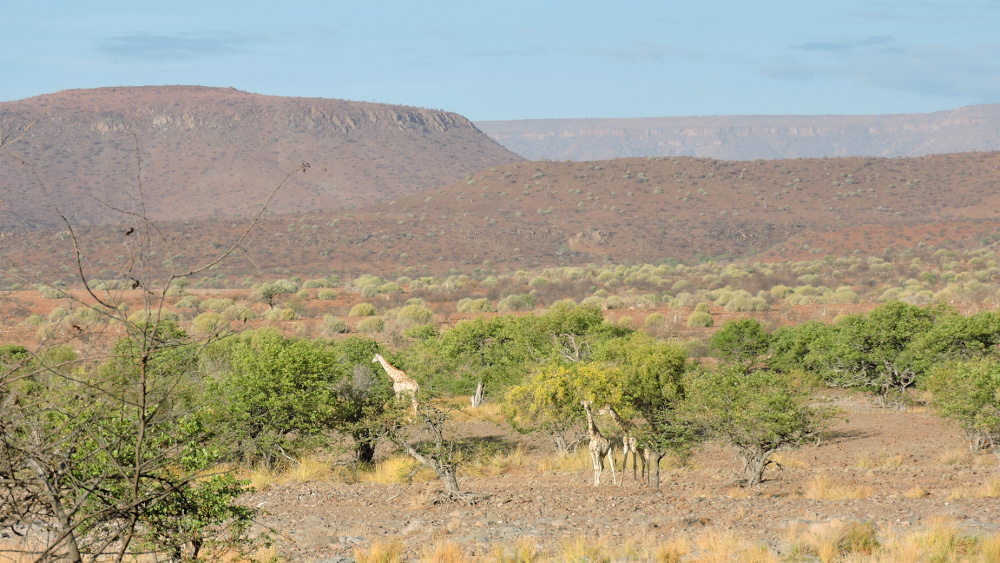
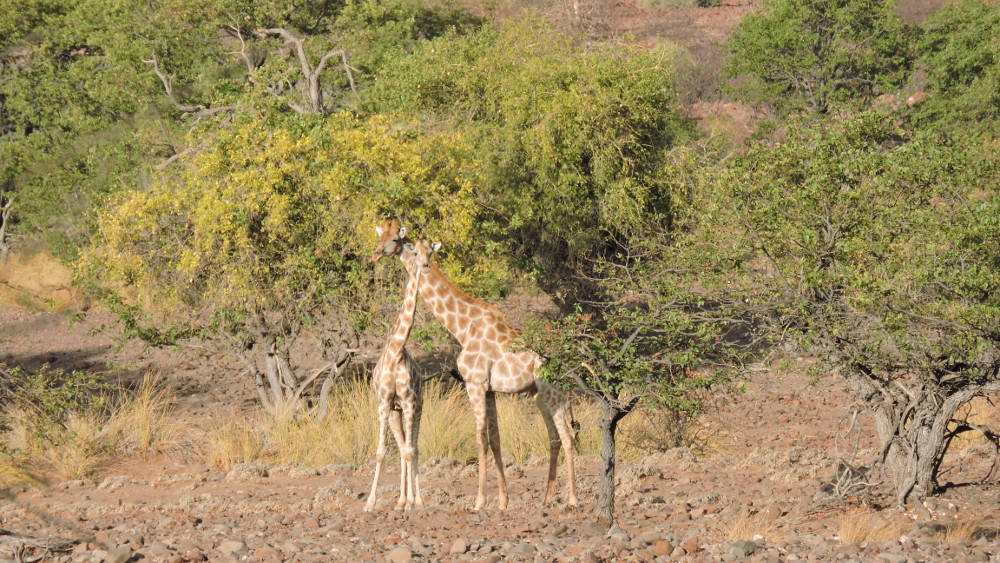
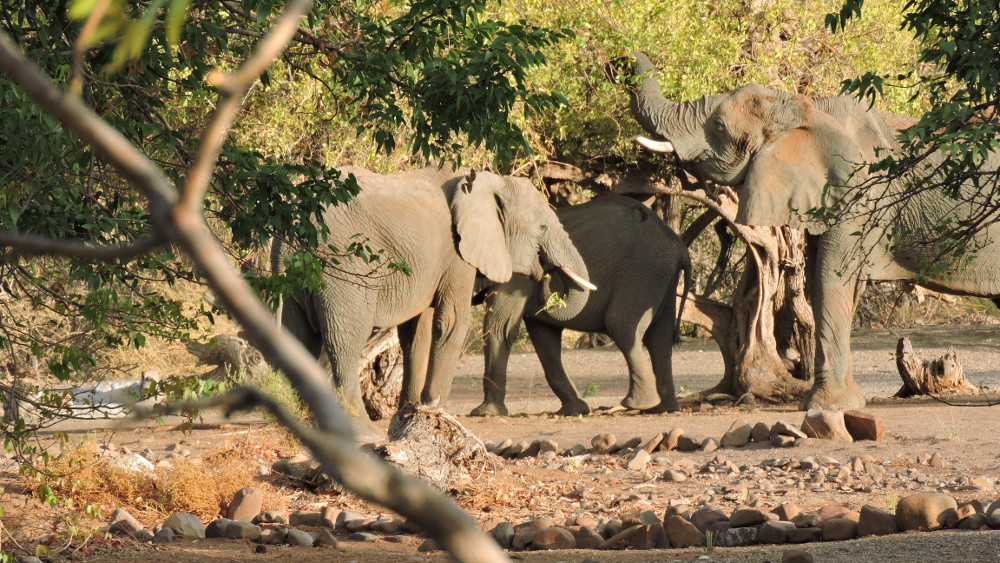
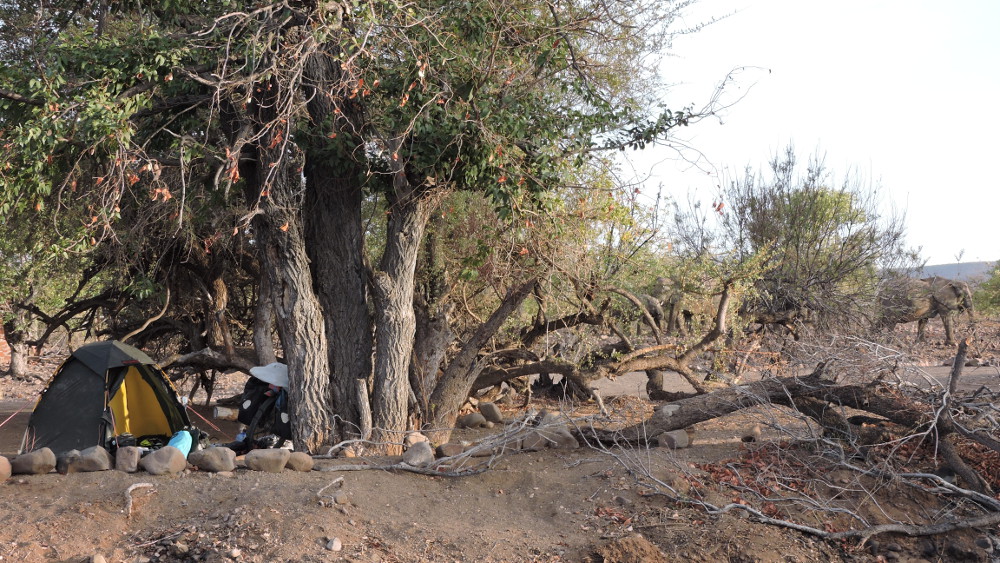
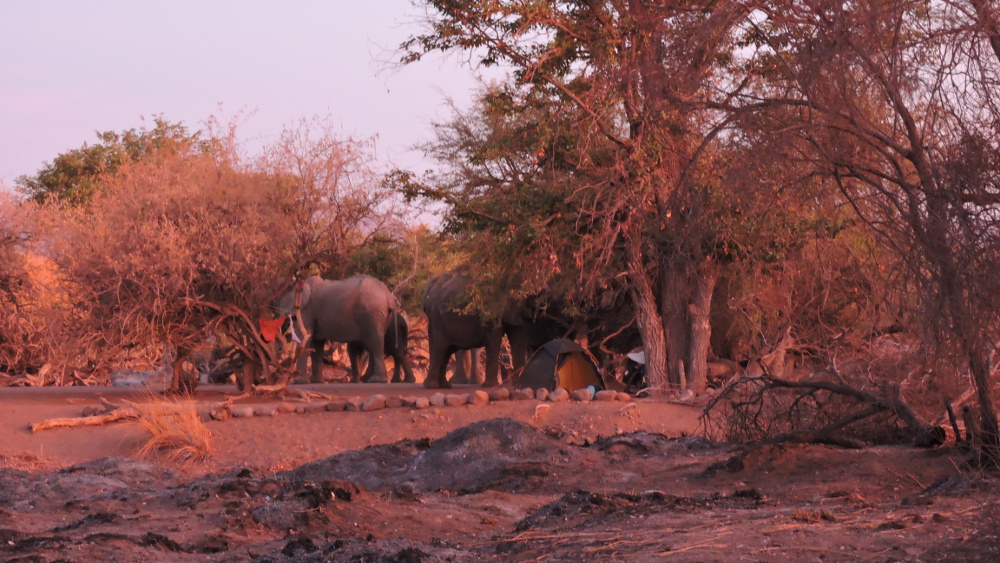
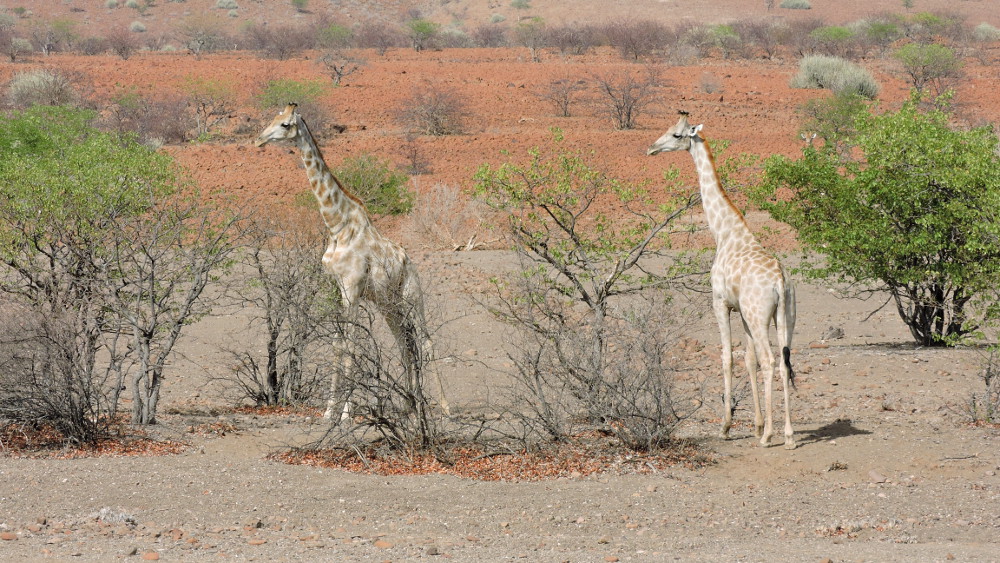
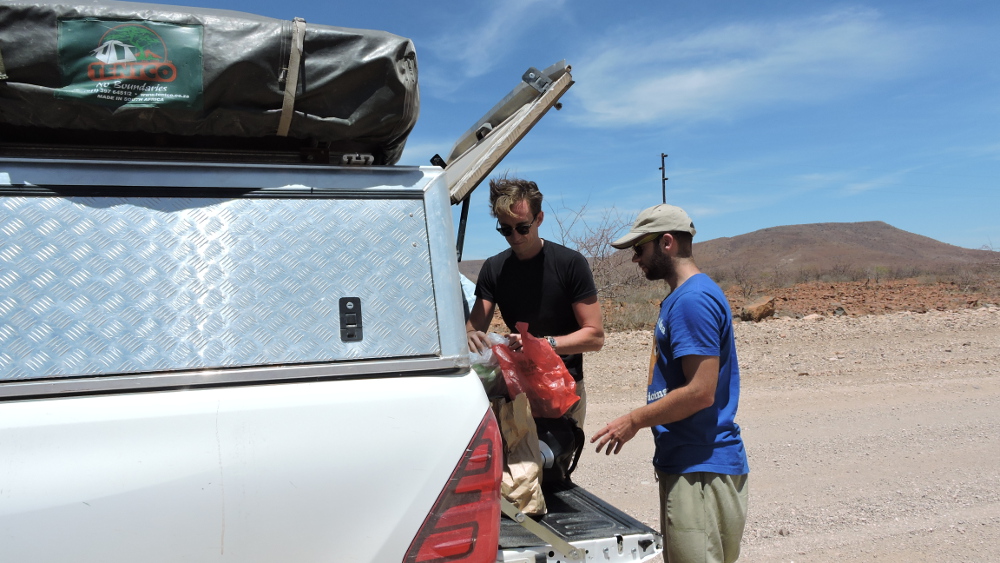

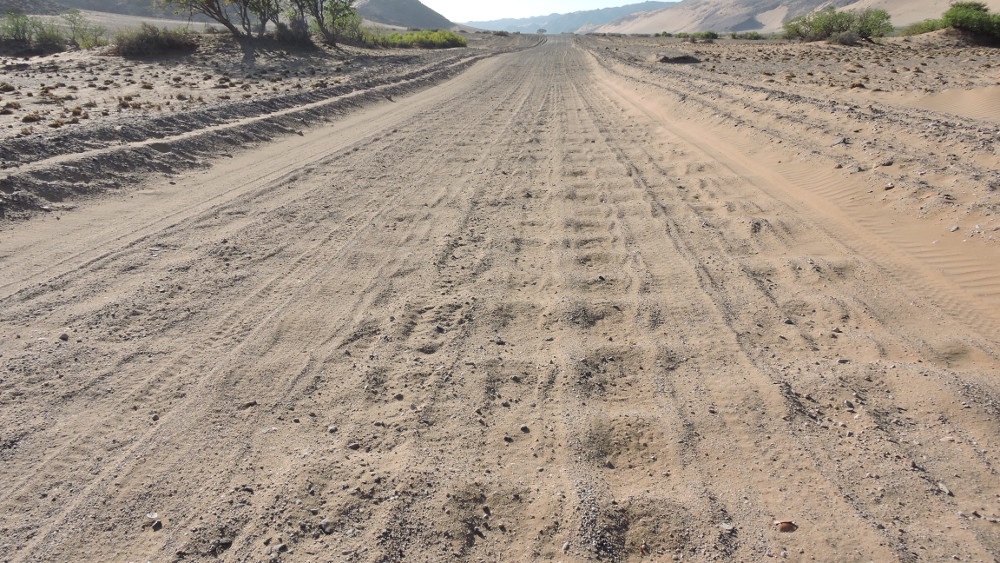

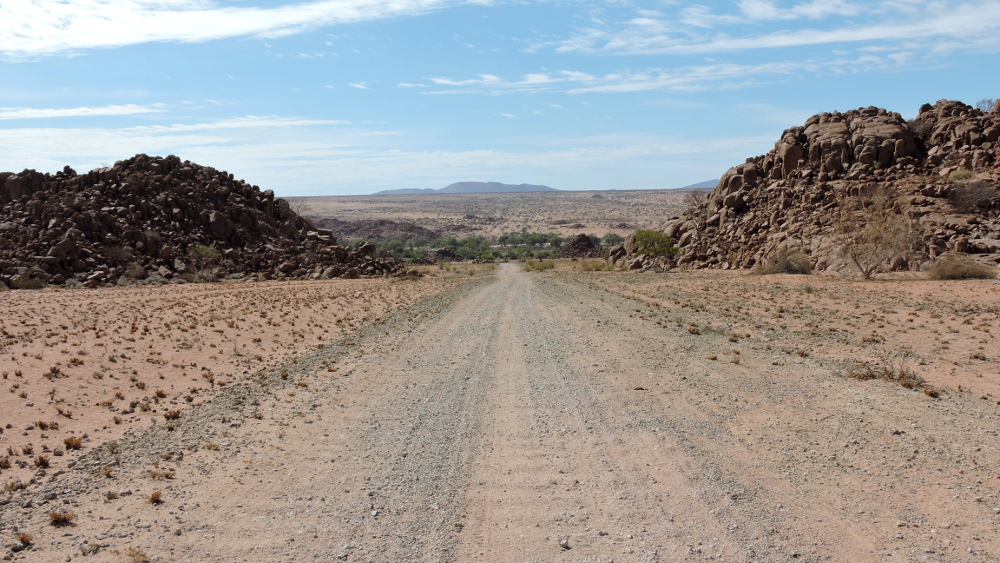
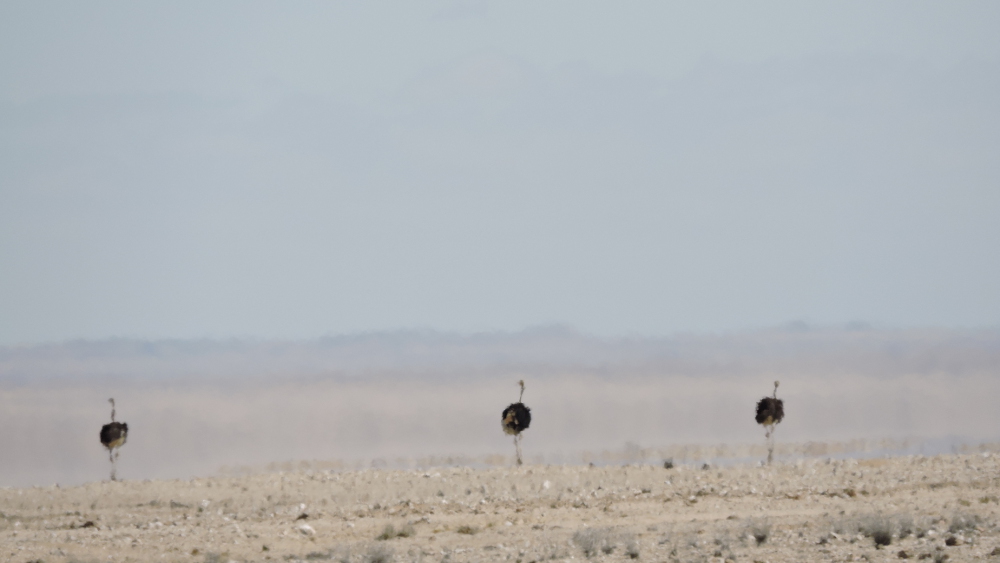
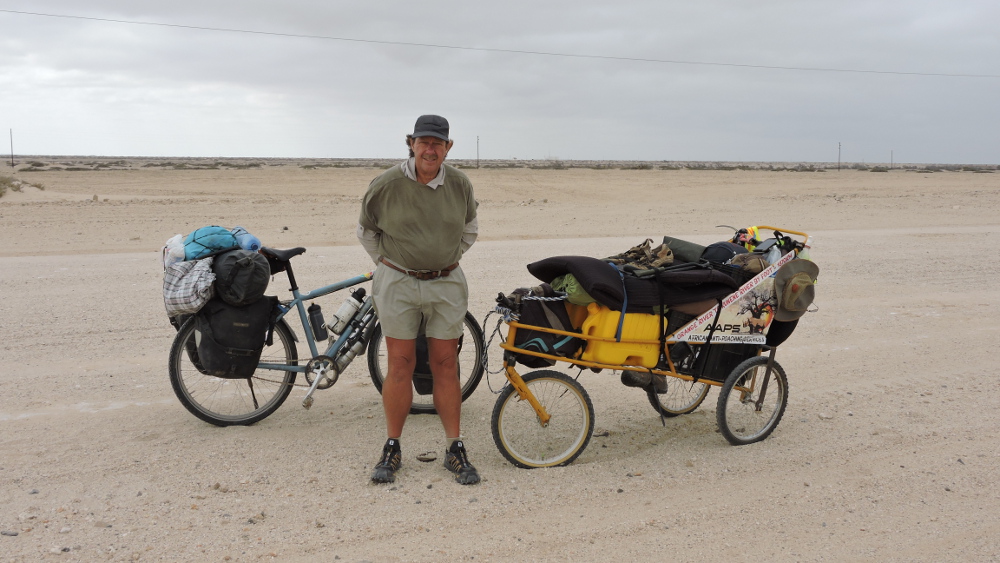
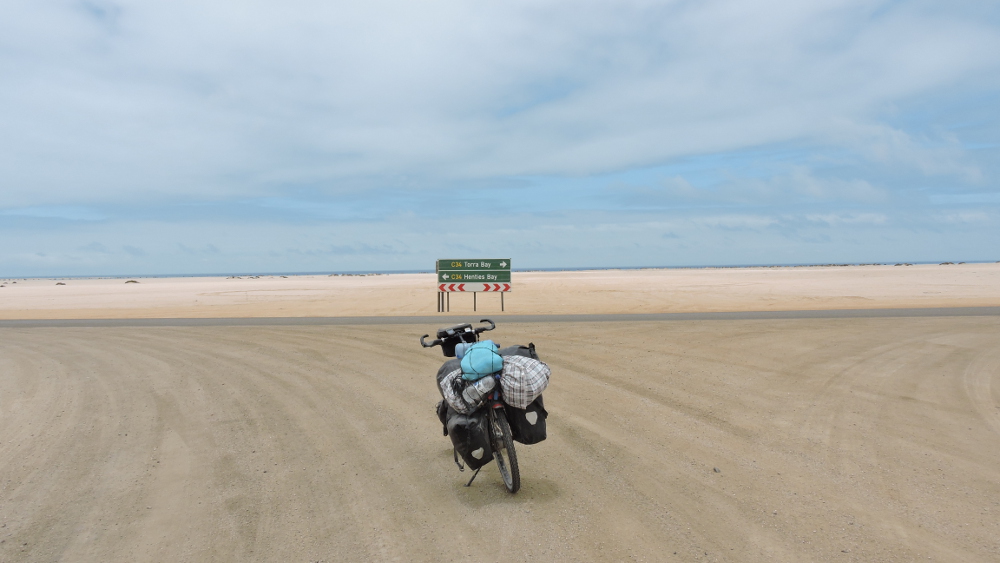
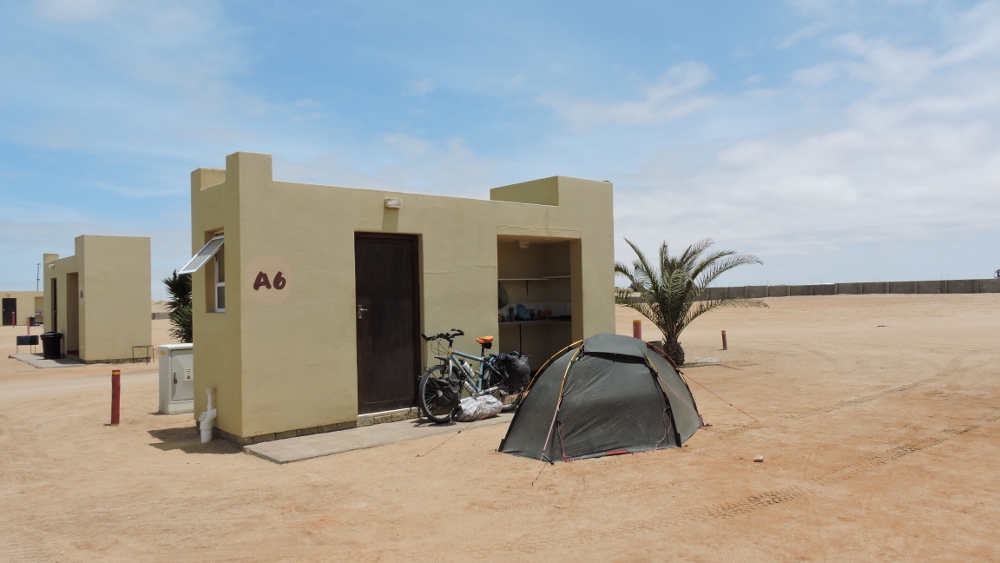

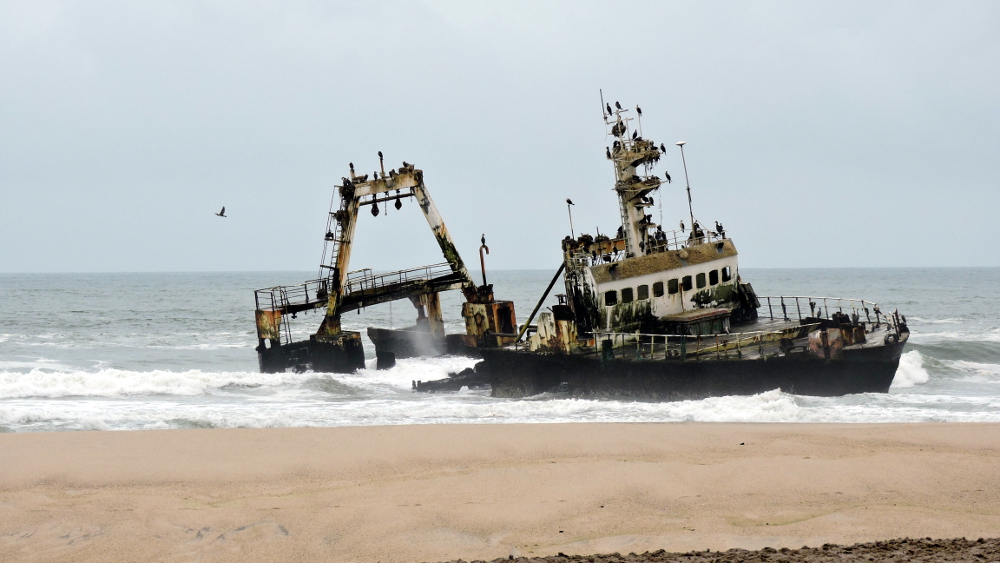
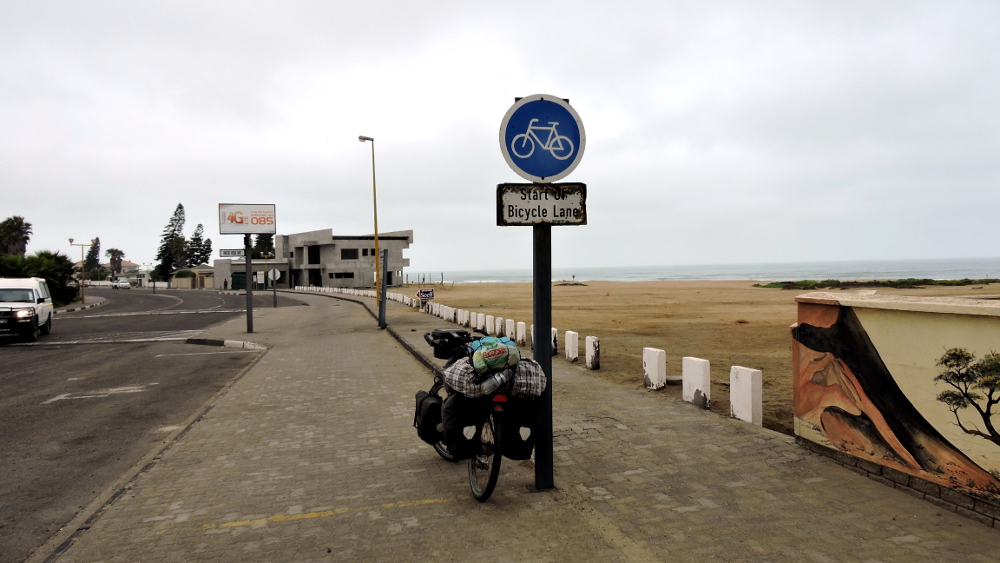
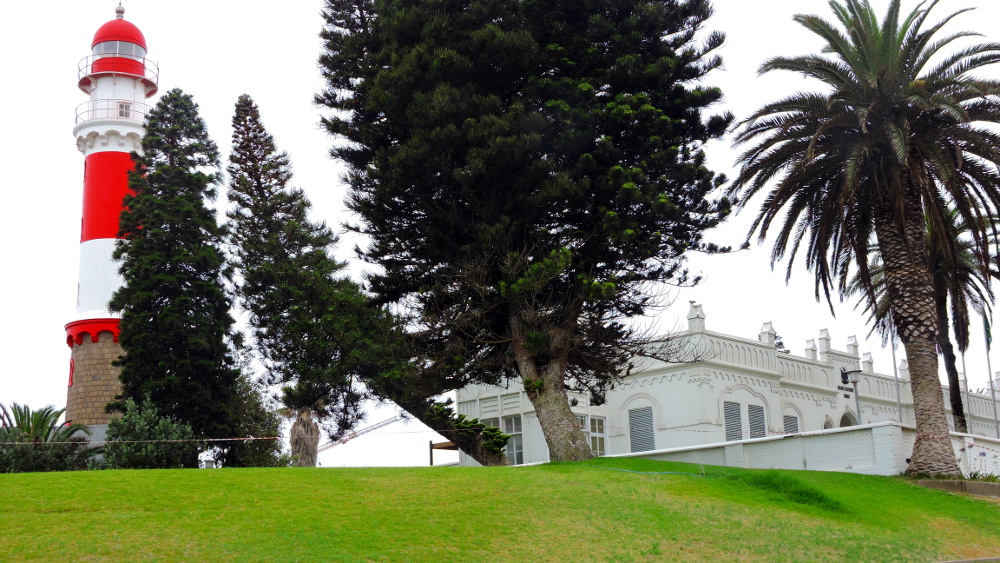
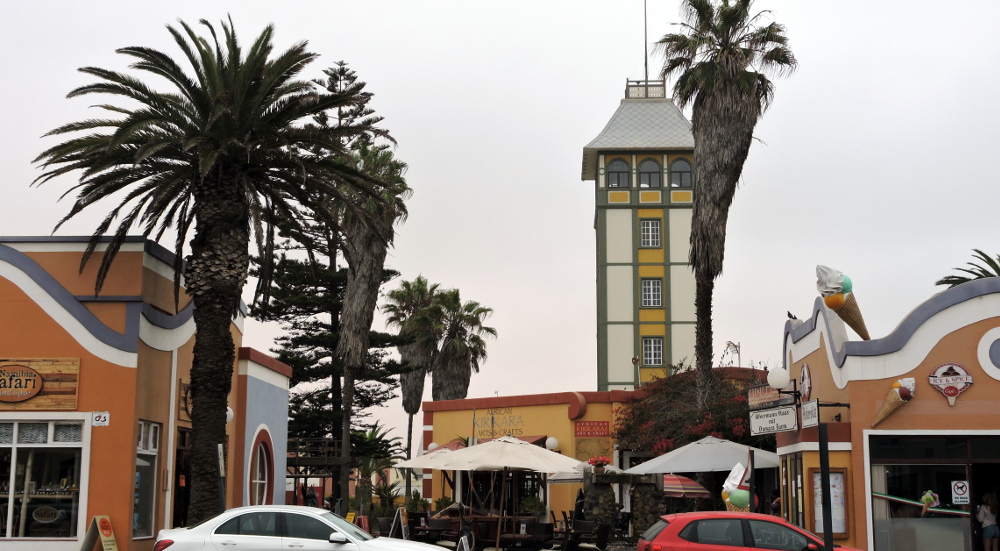
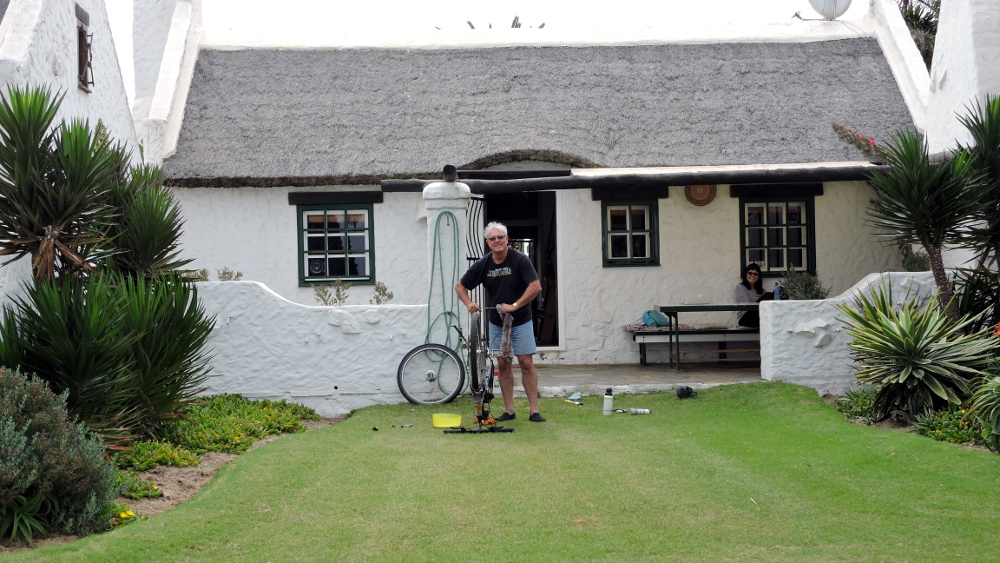
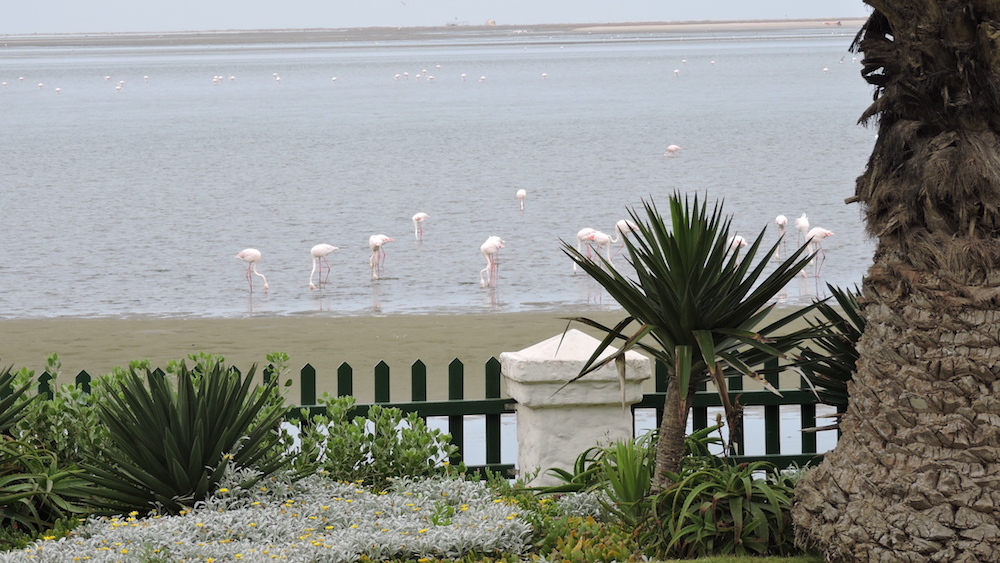
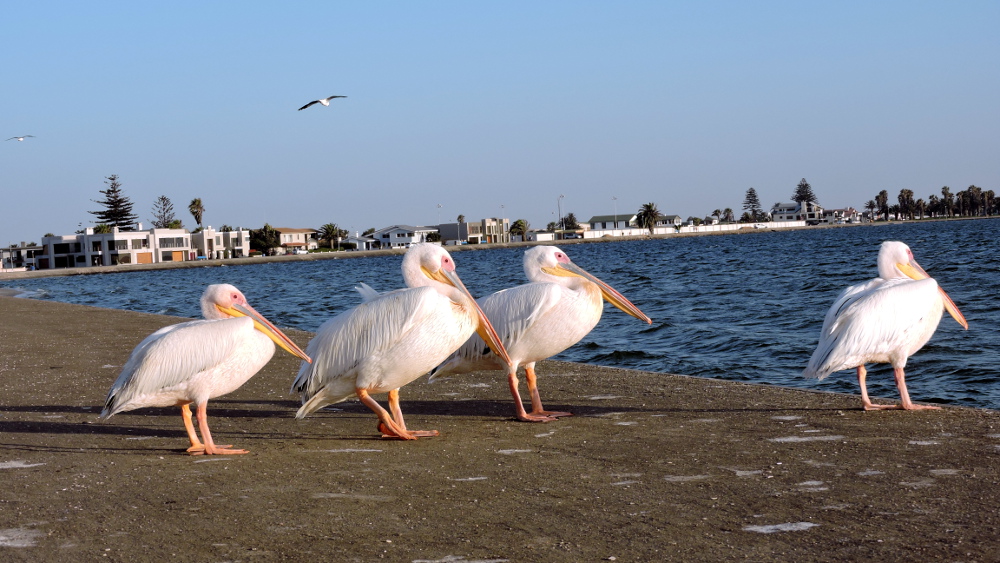
So more places which I also have cycled through. This was at the Palmwag Lodge.
https://scontent.fgbe2-1.fna.fbcdn.net/v/t1.0-9/26168085_10154934781127443_6533388240665082774_n.jpg?_nc_cat=111&_nc_eui2=AeGYQ52sisGATGV-AaLyyqihZr-8_T8qKb1B1ryp_UJQR1-8AhQ9rb5R0lFjlLIPk3G0ghUkXPmw31kTEaJcp-ZUHwpokwIlmec4tbfnNA_SoA&_nc_ht=scontent.fgbe2-1.fna&oh=06b113322ffad5e9debbffcd5dfea73d&oe=5CC3CAB9
And then Spitzkoppe which you missed when you went instead to Henties.https://scontent.fgbe2-2.fna.fbcdn.net/v/t1.0-9/26165218_10154934781112443_3230479037458399669_n.jpg?_nc_cat=108&_nc_eui2=AeGvbPz5O3-II9pBHN-ZOM6Yg1aPlaZu8CsUydQzkhYcpd_wbSWtznH1y6nQw8igntqsDAdrzY7TtYQ8dPrQdY3Jf9trQ03CBqbsvj4gzQScQg&_nc_ht=scontent.fgbe2-2.fna&oh=3f4fca8d64d671a80ba8cceec76fc0d8&oe=5C96A104
Hope you can manage to see the photos.
Here is one more on Skeleton Coast around Uniab Delta
https://scontent.fgbe2-2.fna.fbcdn.net/v/t1.0-9/26220082_10154934780987443_7624958489325371098_n.jpg?_nc_cat=102&_nc_eui2=AeG6MWLrCOKWbyb0woTf7c4PRwRtikJFbLAb6ziAGXLPqdz6obJ2S4K1kCFJk-GH7AFIpbpLv1cfXYe-f8C-M-GVWCTCZL66tALu9rsVAVw-EQ&_nc_ht=scontent.fgbe2-2.fna&oh=e57ed14e2ce0a416632dd72f64ce363c&oe=5CD62A1A
Thanks again for the photos. Must have been fun to cycle around without luggage and fat tyres.